A towering redwood reminds me of coastal California; a maple tree with blazing red leaves brings to mind New England; a palm tree means Florida; and nothing says South Louisiana like a Spanish Moss-draped cypress tree.
The Tchefuncte (chuh-FUNK-tuh) River flowing through our campground near Madisonville, Louisiana was a classic scene of perfect bald cypress trees, which are so common in this area.
These distinctive trees are beautiful, and mysterious as well. They grow in the South, Southeast, up the Mississippi River Valley as far as Kentucky, and on the East Coast up to Virginia. But they’re most common in the swamps and wetlands of Louisiana. In the Spring when their tiny new foliage emerges it’s bright green and soft as a feather.
And only when cypress grow near water do they develop the large tapered base and distinctive “knees.”
The function of these tree stalagmites is unknown, but the most popular opinion is that they help anchor the tree in soft, muddy soil.
Not only are the knees the perfect hunting grounds for wading birds, their dense branches festooned with Spanish moss save many a fish from the frying pan.
The wood from the cypress tree has long been valued for its water resistance. In fact, its nickname is “wood eternal.” In 2012, a team of divers discovered an underwater forest of cypress trees in 60 feet of water off the coast of Mobile, Alabama. They believe that wave-action from Hurricane Katrina may have uncovered the forest. Carbon dating on these perfectly preserved trees determined that they were 52,000 years old! They are so well preserved that when cut, they still smelled like fresh cypress sap.
Our first encounter with cypress wood was a special Louisiana time for us. When we lived in New Orleans, our small shotgun apartment in Uptown had cypress floors, doors, and mantels. The house was over 125 years old and the wood was in perfect condition. Wood eternal indeed.
Happy Trails
James & Terri
Last Updated September 5, 2023
P.S. And now for the fun stuff. Thanks to our friend Pam over at Naturetime, we learned that there used to be a Cypress Knee Museum in Florida. It’s closed now, but it lives on in this wonderful virtual site. Enjoy!
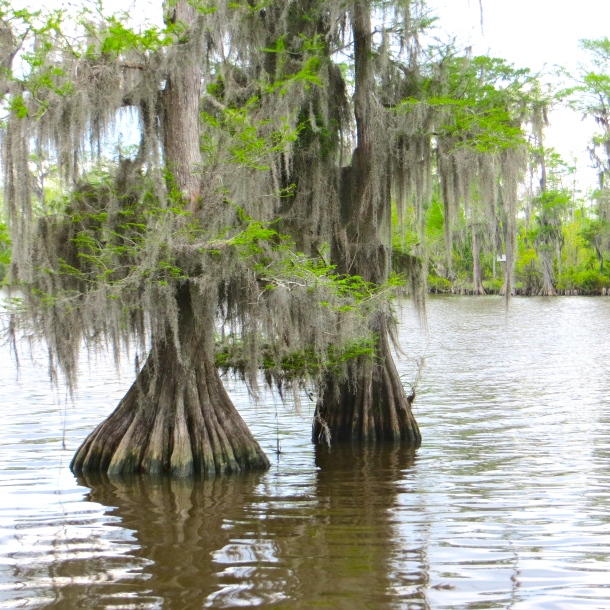

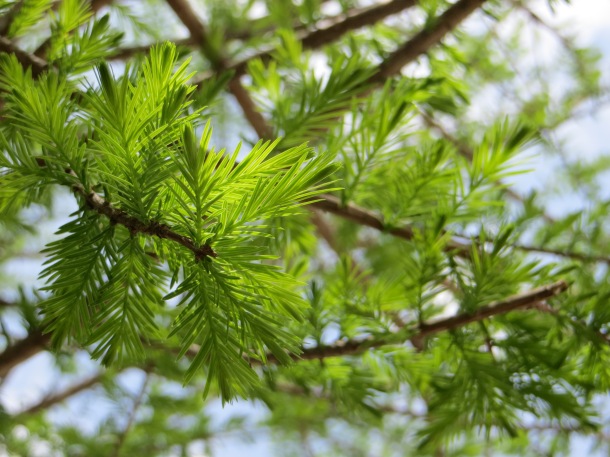
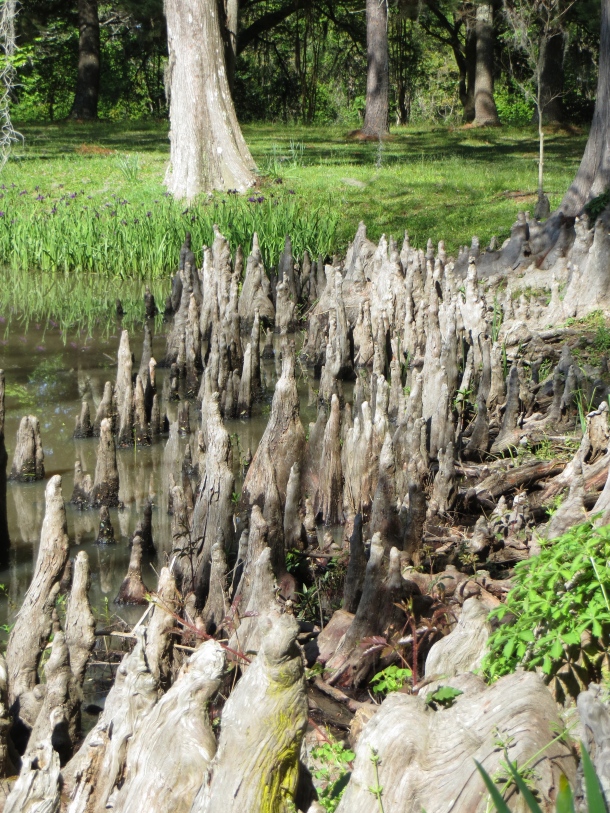

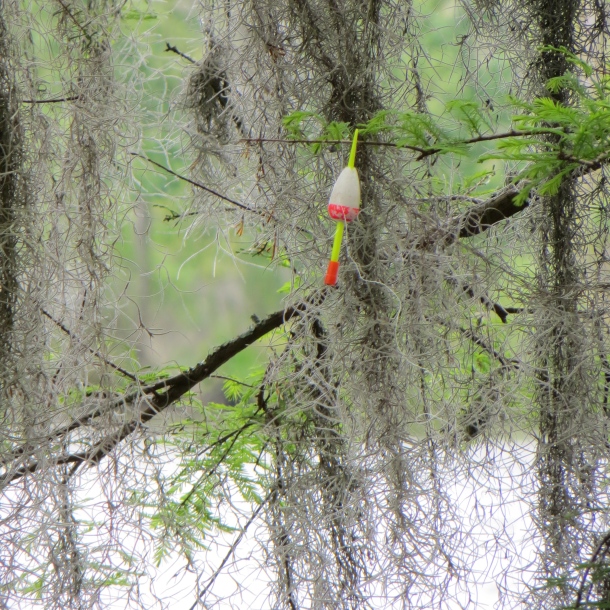
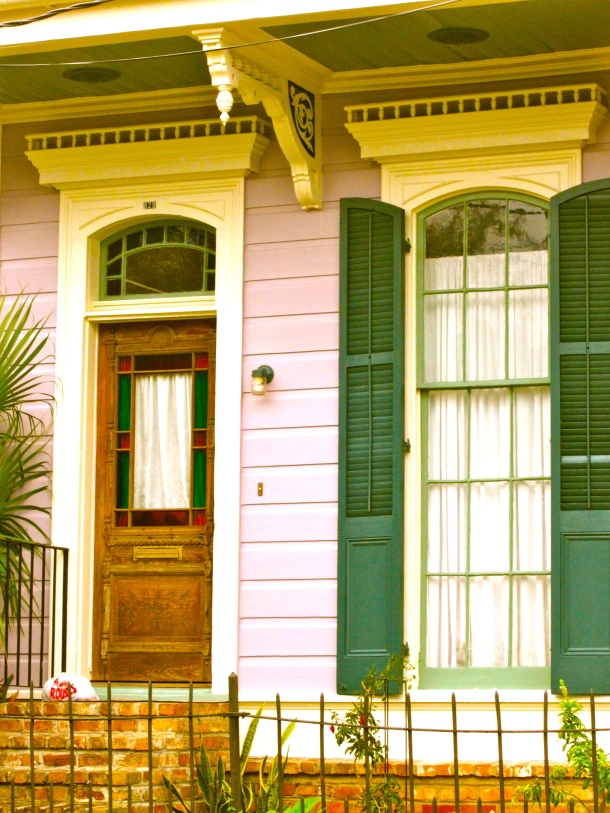
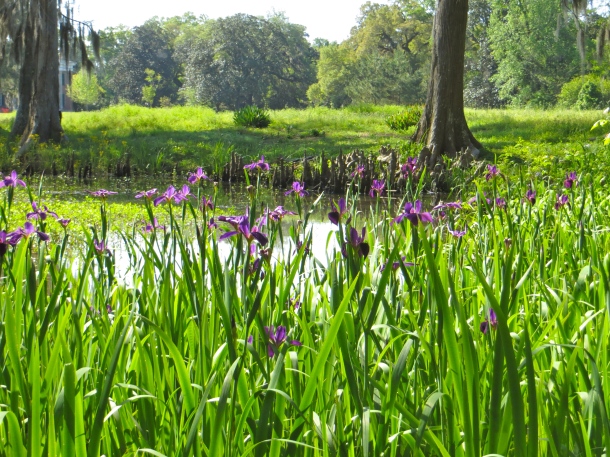
Those Cypress ‘knees’ reminded me of monsters coming out of the swamp! So fascinating the different types of trees that grow on this planet and how they adapt to the environment. Your photos are so vibrant it makes me feel as though I have taken a walk with you. But those knees….I could ponder on those for some time. Really enjoyed this post. How’s the camping going?
Sue, we lived in Louisiana for a couple of years and have traveled all over the state. But I must admit that when I’m standing on the edge of the swamp, with the Spanish Moss swaying in the breeze, I still think of movies like “Swamp Thing”. A forest of these trees in the wetlands creates an feel like no other. The camping is going perfectly. We’ve timed the weather perfectly and other than one scary, monster thunderstorm (to be expected here in spring), all has gone well. ~James
‘Swamp Thing’ …yes I believe that will be the perfect title when the ‘knees’ come alive. Wonderful to hear that you are having fantastic weather. I love thunderstorms but when I have the shelter of my home to watch from. 🙂 Take care.
This thunderstorm gave us a good walloping. The winds were gusting to 40mph, and we had the weather radio on for 15 minutes on the lookout for tornadoes. It gave the tiny popup a good shaking, and we were ready to make a break for the car at any moment. We breathed a sigh of relief when the storm passed. ~James
Beautiful pictures and very interesting.
Thanks Carla. Have you guys ever traveled to NOLA and southern Louisiana? It’s one of our favorite parts of the country. ~James
It was great to learn more about cypress trees. I hand never heard of the ‘knees” before. Very interesting.
I love the knees, and I don’t know of any other tree that has them Darlene. When these trees aren’t near water there bases are normal and there are no knees. Interesting no? ~James
I had learned a bit about these Cypress trees and Spanish Moss while working on Friendship City exchanges between Matsue and New Orleans, but I didn’t have such a deep impression of them until I read this entry and saw these photos! Suddenly it makes so much more sense to me why they come up so often, as that scenery is very unique.
You’re right Brittany, the scenery is truly unique. I’m always surprised when visitors to New Orleans don’t get out of the city to see the swamps and wetlands. They’re such a huge part of what Louisiana is historically, and are an important part of life today as well. An exchange program? How did that go? ~James
They’ve been Friendship Sisters (usually called Sister Cities in the US) for 20 years, so there’s been a lot of ongoing exchange, I have to do a lot of research on NOLA for presentations I give around town. This summer we’re taking a group of seven young adults for a 1-week exchange with homestay in NOLA, so I’m busy with the planning stages for that on this end. : ) I think it’ll go well.
NOLA is a different kind of experience for most people, and it will particularly be so for your exchange folks. Have a great time. ~James
Great post about Cypress trees…thanks for sharing
They’re beautiful and unique trees, and are a signature for the deep south. ~James
I have always loved cypress trees, the ways they fan out at the base and the knees are cool. Cypress logging stripped away so many of these beautiful trees. It is strange to hike through and area and see nothing left but the knees and a well preserved stump. I’ve seen stumps that were at least 4′ in diameter. Amazing (and a little sad)
I’ve never seen a logged area Laura. I can imagine that it would look weird. Where did you see it. Do cypress trees grow in NH? This wood is so water resistant, I’m not surprised that it’s logged. If you can keep the termites out of it this wood will last forever. ~James
Most of the logging stopped in the mid 1900’s. Most of the cleared areas I have seen are on the mid-westcoast of FL. The Chassahowitzka National Wildlife Refuge has some trails that are based on old cypress logging roads. I’ve also come across some old stumps on the Lower Suwannee River in northern westcoast FL
Growing up my parents had a cypress knee lamp. It was beautiful and I always wondered about the name. Thanks for such a lovely tour of the cypress grove!
I’ve never seen a cypress knee lamp Martha, but I’m sure it was neat. Did you grow up in the south, and if not, where on earth did your parents get a knee lamp? Cypress slab table tops are cool as well. Have you ever seen one? ~James
Never seen a table but I imagine they are gorgeous. I grew up in outside Boston. I will ask my sister but that is a very good question… I never thought about how they would have come to own such an odd lamp. I believe my sister still has it. Thanks!!
I think that the closest place to Boston where cypress trees grow is Virginia. I will be interested to hear the history of your lamp Martha. BTW, your parents didn’t have any gator-head ashtrays as well did they? ~James
This photo story about cypress trees is fascinating. Coming from the far opposite side of the country, the swamp habitat hosting these trees are alien to me. To think any kind of wood could endure being submerged and preserved for 52,000 years is astounding to say the least. I can always count on you two to bring interesting and enlightening information to accompany your great photos. You remind me how many places in our own country are left for us to explore. I am sure I will get to it one of these days. – Mike
Mike, do not miss southern Louisiana and New Orleans on your US travels. New Orleans’ history is incredibly rich, and the swamp/wetland habitat is unique in the US. Re: the submerged forest. I found that amazing as well. The researches are concerned that now that the wood has been uncovered, boring worms will attack and destroy it before they finish their studies. And regarding unique habitats, on my first trip to the Pacific NW, I was amazed, and absolutely loved the temperate rainforest on the Olympic Peninsula. What a fantastic ecosystem. ~James
I like those doors!
Andrew, this is the door of the apartment we lived in while in New Orleans (many moons ago). Other than a change of color, the place is exactly the same, and the cypress wood is still doing fine. ~James
We did a road trip through Louisiana last year. This brought back memories. Love the swamp iris in the last photo.
Neither of us had ever seen swamp irises before Lynne, and we didn’t know what they were. These were growing in a small pond, and they must be swamp flowers, because just at the edge of the pond, the flowers were not growing. Thanks for the ID. ~James
offline more than on, i’m so happy to see these images! the cypress trees are so classic ‘deep south’ – but seeing those louisiana iris was a true balm to my soul!
z
Thanks Lisa. They are beautiful flowers that we hadn’t seen before. BTW, we drove by your house in Natchez, and it’s absolutely gorgeous. We took some photos and will send a few by email if you want. Send us an email at gallivance@gmail.com and give us the email address where we should send the photos. Also, if you don’t mind, the house is so cool that we want to do a quick post on it. If you could send a bit of info on the house it would be helpful. Let us know what you think. ~James
yes, the house is amazing isn’t it?
we’ve been w/o power for three days at my house, and i just checked into a little hostal.. will be going home for a few items and back for along internet marathon tonight. will write you and send a quick history. thanks!
z
The Louisiana iris is the state wildflower. Your photo was just gorgeous. We are heading to the Pearl River for a swamp excursion when we get home. Luckily we have cicadas here in Thailand which ‘sounds’ like home.
Thanks for the info. I didn’t know the name or that it was the state wildflower. A swamp trip sounds fun, but I think that the Pearl River is flooded now. There’s been lots of rain here recently, and flooding has been an issue on many streams and rivers. ~James
How interesting. I love the smell of cypress but never really knew much about the trees.
Thanks Marie. I love the smell of most aromatic woods, and cypress is particularly nice. My Mom had a cedar chest where our blankets and winter clothes were stored in summer. To this day the smell of cedar is a happy reminder for me. ~James
Wonderful post! Reminded me of my travels.
Thanks JF. Have you seen Cypress or similar trees in your travels, and if so, where were they? ~James
Lousiana and Florida. Cypress Gardens is a Florida’s attraction
These are spectacular trees! I can’t believe they found ancient ones growing in the water! That is wild!
They are spectacular Nicole. I don’t think that the buried forest was actually growing, but had just been preserved. And buried wood surviving for 52,000 years is amazing as well. ~James
Yes that is amazing. 52,000 years!
Love the pics, especially the close-up of the stalagmites!
Thanks Peggy. Aren’t these knees weird and cool. Very close up, the end of the growth actually does look like a knee. ~James
Fascinating.
I love the photos of the stalagmite thingeys. How weird and wonderful Mother Nature is.
Cypress knees are definitely weird and wonderful Vicki. It’s also strange that botanists can’t determine their purpose. ~James
Love cypress knees! Have even seen some pretty funny folk art made of them at area craft shows — and standing in yards. The South is distinctive, no doubt. And you’ve captured some pretty areas to show us in this post. Have fun!
Cypress knees rate pretty high on the weird-o-meter Rusha. Did you see Martha’s comment about the knee lamp her parents had (in Boston)? Since I decided to do this post, I’ve seen some incredible stands of knees. Oddly enough, one the the biggest collections we saw was in a small pond in front of an antebullum mansion. ~James
That’s what I’m talking about! Those lamps and painted pieces to look like animals or whatever. Fun, fun, fun!
These remind me of the classic mangrove trees you see around parts I’m more familiar with. Beautiful photos.
We have mangroves in southern Florida Bronwyn, and their root system is complicated and neat as well. But, in south Florida mangroves are home to millions of sand fleas (tiny, biting pain-in-the-butt bugs), so I don’t hang around to study the trees very long. ~James
Reblogged this on Paisagismo Legal.
Thanks very much for the reblog of out post. James & Terri @ Gallivance.net
As I wrote on your Facebook post, I have one of these beautiful trees growing in my front yard, minus the lovely Spanish moss. It’s amazing how versatile these trees are, because my bald cypress is very far from a swamp. The knees of the tree in my yard poke up through the grass where they get whacked by the mower.
Thanks so much for posting about these wonderful trees.
Thanks Catherine. You’re not the only person that thinks cypress trees are lovely. As you might know, it’s the state tree of Louisiana, so the politicians like it as well. To me it looks like an evergreen tree, and I’m always surprised how soft the needles are. We’ll have to follow your tree long-term to see how the knee-whacking impacts it. ~James
Thank you for visiting my blog – so glad you liked my post – have you ever been to the South of England? If you’re passing, call in for a cuppa at the beach hut, the kettle is always on!! Great to discover your blog – wonderful photos – fascinating trees.
Thanks for the comment and for dropping by the blog Sandra (as well as the invitation for tea). As a matter of fact, I have been to the South of England. Terri and I lived in London for 3 years, and we visited many times. We absolutely loved living and traveling in England. One of our favorite things to do on Saturday morning was to go to Victoria Station, and just catch a train to some wonderful village for a weekend B&B stay. It was like throwing darts at a map, and we loved it. ~James
Wow – I absolutely love the way you describe your life a travels – so carefree
I love bald cypress trees! We were thinking of growing one by our pond. There was actually at one time a cypress knee museum in southern Florida: http://kozmicdreams.com/tomgaskins.htm
One thing that I didn’t discover about cypress trees Pam is how quickly they grow. They look like slow-growers. Do you know? Great info on the knee museum. Too bad I didn’t know about it earlier, so I could’ve included it in the post. Its a wonderful collection to be sure. ~James
A guide to Florida landscape plants says that they grow quickly with sufficient water, and do well in yards because growth is more vertical than horizontal. They only make the knees when planted beside water. Hope your travels are lots of fun!
Thanks again for the link to the Knee Museum Pam. I added it to the end of the post. ~James
Such a lovely tribute to a beautiful tree. On my first trip to Louisiana, I remember being so taken with the cypress (never having seen anything like them in CA or the northeast) that I used up a whole roll of film on… trees! They seem to be to Louisiana what the redwood trees are to Northern California.
Thanks Miranda. I love these trees as well. Sitting in the shade of a cypress tree, hearing the buzz of cicadas, and watching the Spanish moss sway in the breeze gets me in a Southern state of mind. And Louisiana just wouldn’t be the same without the bald cypress trees. ~James
Great shots and interesting post. Thanks to taking me there… Bye. Kamila
Thanks for the comment and for dropping by the blog Kamila. These are beautiful, interesting and unusual trees for sure. ~James